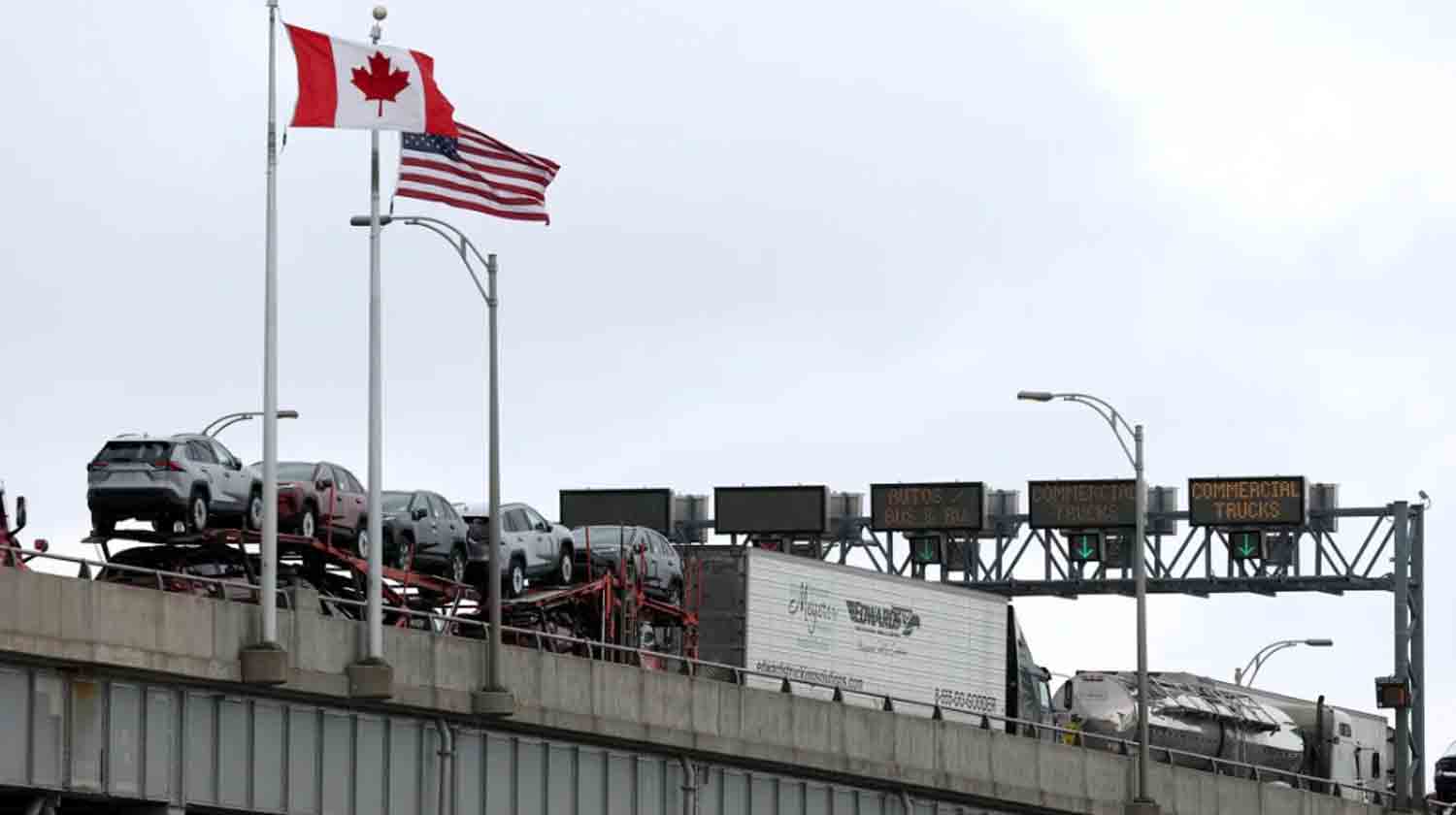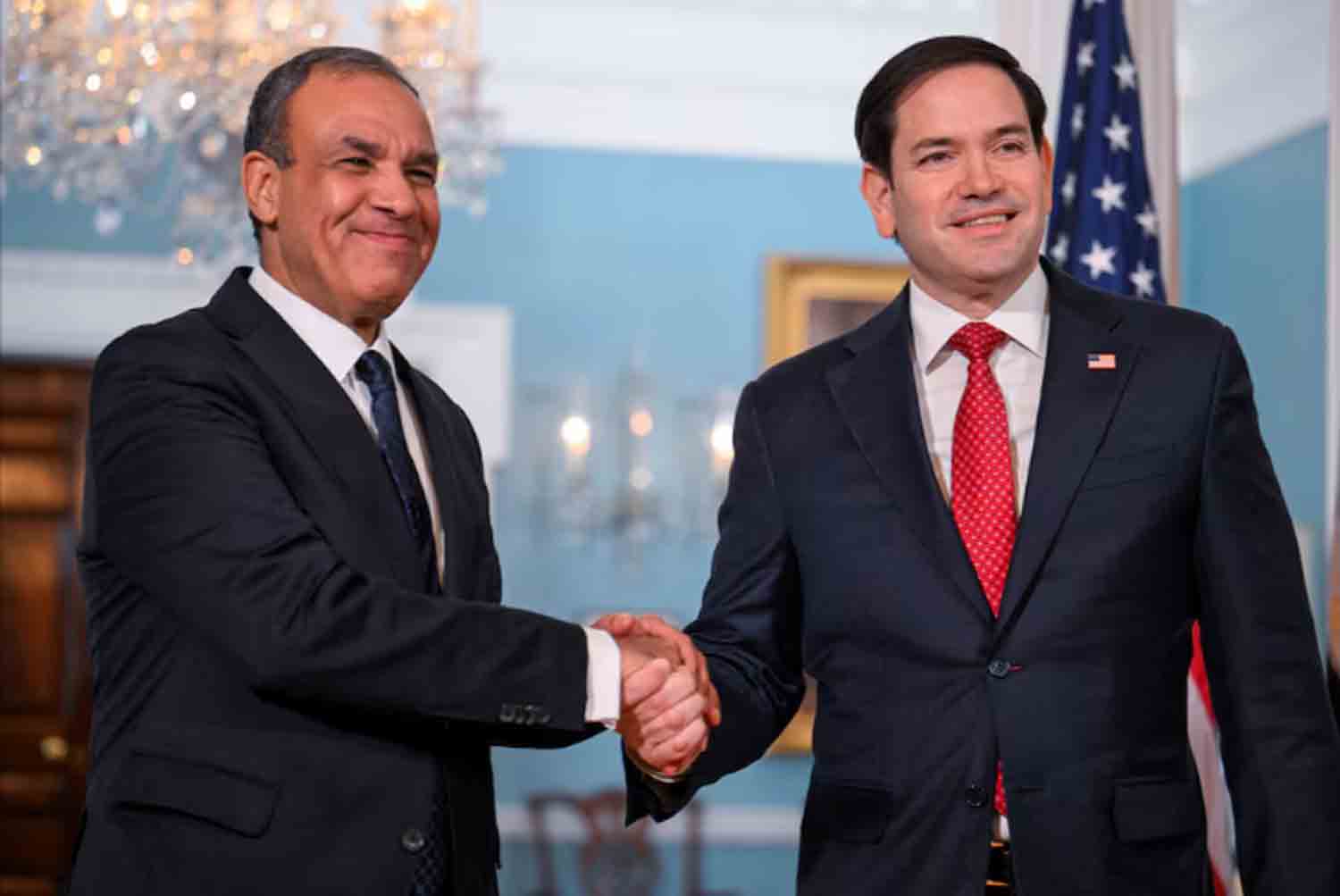Many individuals find themselves perplexed by President Donald Trump’s tariff strategy.
Trump and his economic advisors have issued numerous conflicting statements regarding the justification for these tariffs, leaving American multinational corporations uncertain in their planning and foreign nations unsure of how to engage in negotiations. He imposed significant import taxes on Canada and Mexico, only to delay their implementation for a month in exchange for minimal concessions from these neighboring countries. While broad tariffs on Chinese goods are currently in effect, the reinstatement of an exemption for small items led to considerable confusion at the US Postal Service, prompting a temporary reversal. Additionally, further tariffs on steel and aluminum are anticipated to be announced on Monday, ahead of a potentially more extensive reciprocal tariff plan expected later this week.
This could merely be the start: Trump has suggested the possibility of imposing tariffs on the European Union and has indicated a desire for a comprehensive tariff on all imports into the United States.
Tariffs play a crucial role in the economy. The United States has historically utilized tariffs to safeguard its manufacturing sector, agricultural producers, technology, and national security interests. While previous administrations, including Trump’s initial term, typically employed a precise approach to tariffs, Trump appears ready to adopt a more aggressive stance in his second term, threatening to impose tariffs on numerous goods that the United States does not manufacture.
Corporate America, alarmed by these tariffs, has actively campaigned against them. Many mainstream economists largely concur that Trump’s tariff strategy is likely to trigger inflation and hinder US economic growth. Last month, the editors of the Wall Street Journal, who usually support the president’s policies, labeled Trump’s tariff approach as “the dumbest trade war in history.”
However, there is a rationale behind Trump’s tariff strategy.
Rationale for implementing and expanding tariffs
Trump’s rationale for implementing and expanding tariffs is driven by three main objectives: generating revenue, achieving trade balance, and exerting pressure on competing nations.
These objectives often conflict, complicating negotiations and hindering business planning. For instance, a nation targeted by Trump’s tariffs may seek to negotiate a resolution, as seen with Canada and Mexico’s efforts to address the issues of fentanyl trafficking and undocumented immigration. However, if Trump proceeds with broad tariffs aimed at revenue generation alongside reciprocal tariffs for trade balance, both Canada and Mexico could still face tariff impositions.
Despite the contentious nature of his tariff strategy, there is a discernible logic behind it. The United States is grappling with a significant budget deficit, and Trump has indicated that tariffs could offset lost revenue, particularly from his 2017 tax cuts, which he aims to extend and enhance. During a recent keynote speech at the World Economic Forum, Trump projected that his tariffs could yield hundreds of billions, potentially trillions, of dollars for the U.S. Treasury.
Trump frequently critiques American trade policy for allegedly “subsidizing” foreign nations, asserting that the U.S. is “losing” hundreds of billions of dollars to its neighbors. His comments are somewhat vague, primarily addressing the trade deficit, which reflects the disparity between U.S. exports and imports. Some economists warn that Trump’s portrayal of the trade deficit may misrepresent its significance as a vital component of the U.S. economy, allowing for the acquisition of services and products not commonly produced domestically, such as coffee. However, Trump plans to introduce reciprocal tariffs, which would equalize tariffs imposed by other countries, with the intention of achieving a more balanced trade situation.
Moreover, Trump has threatened to impose tariffs as a means to compel countries to concede to what he perceives as American interests. His aggressive tariffs on China, along with postponed tariffs on Canada and Mexico, are designed to pressure these major trading partners into reducing the flow of undocumented immigrants and fentanyl into the U.S. While tariffs are levied on importers, they can deter consumers from buying goods from affected countries, thereby impacting their economies. This has prompted some foreign nations to pursue agreements to circumvent tariffs; for instance, Mexico and Canada recently agreed to enhance border security measures.
This is why Trump has referred to “tariff” as the fourth-most beautiful word in the dictionary, following “God,” “love,” and “religion”: it serves as a versatile instrument to achieve multiple objectives.
The challenge lies in the difficulty of achieving all three objectives at once. If nations comply with Trump’s request to avoid tariffs, the United States will struggle to generate the necessary revenue. Conversely, if the U.S. decides to impose tariffs on foreign countries regardless, those countries will lack motivation to negotiate. Additionally, while striving for a balanced trade, the implementation of tariffs has resulted in retaliatory measures, sparking a trade war that could negatively impact American industries and consumers.
What measures are currently in place and what are the future steps?
Recently, Trump enacted a 10% tariff on all Chinese imports to the U.S., adding to the existing tariffs on China. Following the implementation of these tariffs on Tuesday, China swiftly responded by imposing tariffs on certain chips and metals, initiating an investigation into Google, and designating the manufacturer of Calvin Klein and Tommy Hilfiger as an unreliable entity.
However, Trump has already begun to ease some of these tariffs, suspending taxes on goods valued at $800 or less imported into the U.S. until the Commerce Department can establish a system for tracking these items. He also postponed the 25% tariffs on imports from Mexico and Canada until at least March 1.
During a press briefing on Air Force One on Sunday, Trump indicated his intention to announce a 25% tariff on all steel and aluminum imports into the United States on Monday. The influx of inexpensive steel from China has adversely affected global production, including in the U.S. While steel tariffs during Trump’s first term led to increased domestic hiring and production, they also resulted in higher prices.
Trump indicated his intention to conduct a separate news conference on Tuesday or Wednesday to unveil significant new reciprocal tariffs, potentially aligning with the tariffs imposed by other nations on U.S. goods on a dollar-for-dollar basis.
“It’s quite straightforward: if they impose charges on us, we will impose charges on them,” Trump stated.
In addition to the general 10% tariff on all imports and the threats directed at the EU, Trump has previously suggested that he might leverage tariffs to persuade Denmark to transfer control of Greenland to the United States.
He did not elaborate extensively on the scope of the new tariffs or the timeline for their implementation.
Discover more from Defence Talks | Defense News Hub, Military Updates, Security Insights
Subscribe to get the latest posts sent to your email.





